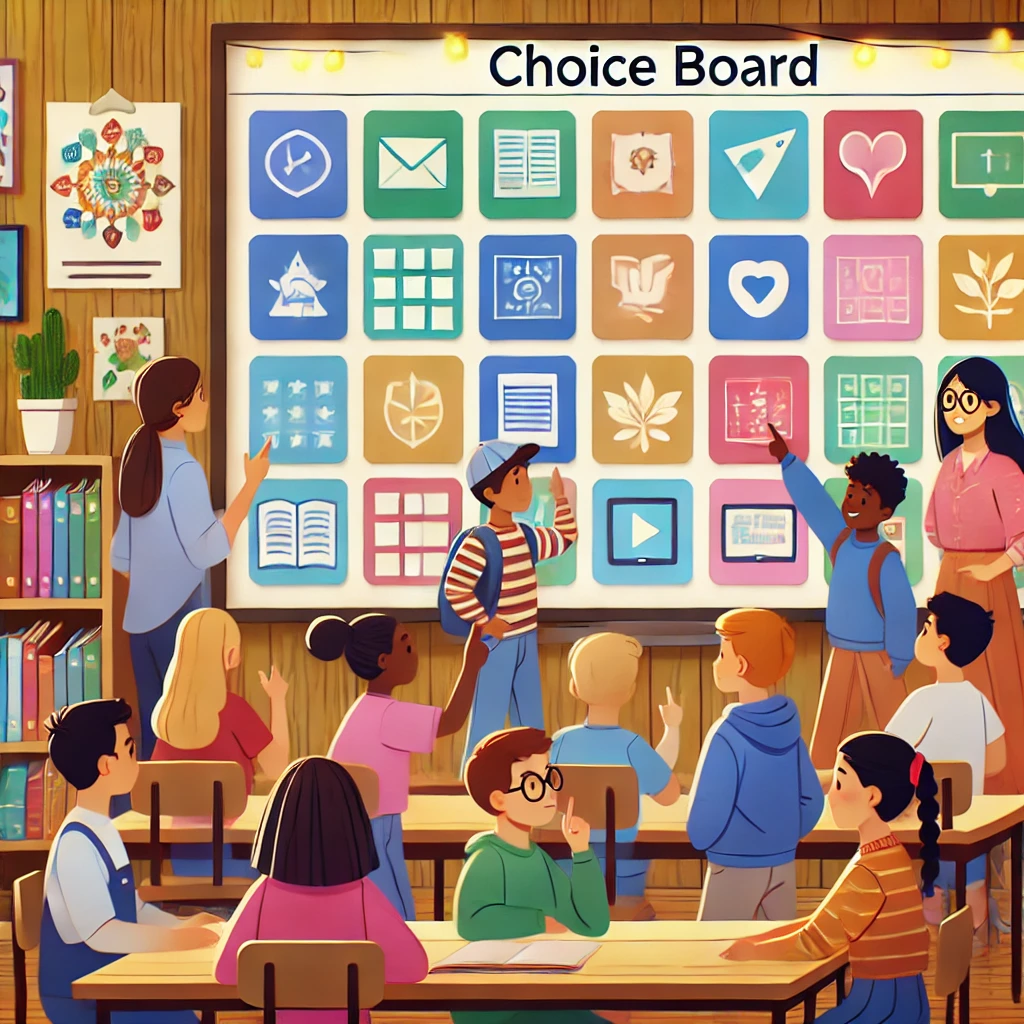How to Use Choice Boards for Student Engagement
In the ever-evolving landscape of education, teachers are constantly seeking innovative methods to enhance student engagement and cater to diverse learning styles. One such method gaining popularity is the use of choice boards. These instructional tools provide students with a range of activities to choose from, allowing them to demonstrate their understanding of a subject in various ways.
By leveraging platforms like Google Slides and Google Docs, choice boards become easily accessible and adaptable for any classroom setting, offering a flexible and dynamic approach to learning.
At their core, choice boards are grids or tables that present a variety of tasks or activities related to a specific unit of study. Each cell within the grid contains a different assignment, providing students with multiple options to showcase their knowledge and skills. This format not only encourages student choice but also promotes student engagement by allowing learners to select tasks that align with their interests and strengths.

The adaptability of choice boards is one of their most significant advantages. Teachers can tailor the activities to suit different grade levels and subject areas, from 2nd grade social studies to middle school math to high school science. The integration of technology through platforms like Google Slides and Google Docs further enhances their versatility. These digital tools enable teachers to create interactive and visually appealing choice boards that can be easily shared and accessed by students, whether they are in the classroom or engaged in remote learning.
One of the primary benefits of choice boards is their ability to boost student engagement. When students are given the opportunity to choose how they learn and demonstrate their understanding, they are more likely to be invested in the process. This sense of ownership and autonomy can lead to increased motivation and a deeper connection to the material. By offering a range of activities that cater to different learning styles, choice boards ensure that every student can find a task that resonates with them.
Choice boards are designed to accommodate the diverse learning styles of students. For example, a board might include tasks that appeal to visual learners, such as creating a graphic organizer or designing a visual art project. Similarly, kinesthetic learners might be drawn to hands-on lessons or experiments, while auditory learners could choose activities that involve discussions or presentations. This variety ensures that all students have the opportunity to engage with the material in a way that suits their preferred learning style.
The practical applications of choice boards are vast and varied. They can be used for daily instructional times, as homework assignments, or as enrichment activities for early finishers. For example, a tic-tac-toe choice board might require students to complete three tasks in a row, column, or diagonal, providing a structured yet flexible approach to learning. Teachers can also use choice boards to differentiate instruction, offering a mix of challenging activities and more accessible tasks to cater to the varying abilities within a classroom.
How Choice Boards Work
- Design and Structure: Teachers design choice boards in various formats, such as tic-tac-toe boards or graphic organizers. Each section of the board contains a different activity or task related to the unit of study.
- Activity Variety: The activities can range from creative writing to hands-on lessons, covering different subject areas like math, social studies, science, and English language arts.
- Implementation: Students can choose tasks based on their interests and learning preferences. For instance, a math choice board might include tasks like solving equations, creating a game, or explaining a concept through a video.
- Use of Technology: Google Slides and Google Docs facilitate the creation and sharing of choice boards. Visual choice boards can be particularly engaging, providing a clear and appealing way for students to see their options.
Benefits of Choice Boards
- Student Engagement: Offering student choice in assignments increases engagement. When students have the freedom to select tasks that interest them, they are more motivated and invested in their learning.
- Catering to Different Learning Styles: Choice boards address different learning styles by including a variety of activities. Whether a student excels in visual arts, enjoys creative writing, or prefers hands-on lessons, there is something for everyone.
- Flexible Learning: Choice boards are adaptable for different grade levels and can be used for various purposes. For example, they can be integrated into regular instructional times, used as homework assignments, or provided as options for early finishers.
- Support for Remote Learning: During periods of remote learning, choice boards offer a structured yet flexible approach to education. They help maintain student engagement and provide clear learning experiences that students can complete at their own pace.
- Encouraging Independence: Choice boards encourage individual student autonomy, allowing them to take charge of their own learning. This independence is crucial for developing critical thinking and decision-making skills.
- Teacher Check-ins: Regular teacher check-ins can help guide students through their choices and ensure they are on the right track, providing support as needed.
- Added Benefit of Differentiation: Choice boards naturally differentiate instruction by offering challenging activities that cater to a range of abilities within a classroom. Teachers advocate for the use of choice boards because they can meet the needs of diverse learners.
- Promoting Creativity and New Ideas: Students are encouraged to think creatively and explore new ideas. The use of choice boards in subjects like visual art and social studies fosters a deeper connection to the material.
- Meaningful Learning: By allowing students to choose how they demonstrate their understanding, choice boards create meaningful learning experiences that resonate more deeply with students.
- Variety of Tasks: The inclusion of a variety of tasks in choice boards ensures that students are exposed to different methods of learning and assessment. This variety can make learning more dynamic and engaging.
Examples of Choice Boards
- Tic-Tac-Toe Choice Boards: Students choose three activities in a row (horizontal, vertical, or diagonal) to complete.
- Game Boards: Tasks are presented in a game-like format, adding an element of fun to learning.
- Subject-Specific Boards: For example, a science class might have a choice board with options for experiments, research projects, and model building.
Creating Your Own Choice Board
To create your own choice board, consider the particular subject and grade level you are teaching. Use a choice board template to organize the activities and ensure there is a balance of different learning styles. Incorporate teacher check-ins to monitor progress and provide feedback. By designing a choice board tailored to your own classroom, you can enhance the learning experience and meet the diverse needs of your students throughout the school year.
In summary, choice boards are a great way to provide students with own choices in their learning, catering to different styles and promoting student engagement. They can be used in any class period and adapted for any subject areas, making them a versatile and effective tool in the modern classroom.
Want to Learn More About Implementing Student Choice?
If you are looking for more ways to give your students more choices in the classroom, look no further! Our free webinar, “Choosing Choice“, is designed specifically for educators like you who want to learn how to give their students more autonomy and agency in their learning.
During this interactive and informative webinar, you will learn about the latest research on student choice in the classroom and how it can benefit both you and your students. You will also have the opportunity to participate in discussions and activities that will help you implement student choice in your own classroom.
Some of the key takeaways from this 45-minute free virtual workshop include:
- The benefits of student choice in the classroom, including improved motivation, engagement, and academic achievement
- Strategies for giving students more autonomy and agency in their learning
- Ways to create a classroom culture that supports student choice
- Examples of successful student choice activities and projects
- A 45-minute Professional Development certificate after viewing 100% of the workshop
Don’t miss this opportunity to learn from experienced educators and take the first step toward giving your students more choices in the classroom. Sign up for our webinar today and start seeing the positive impact on your students and yourself!
Join us and learn how to give your students more choices in the classroom and experience less stress. Your students and yourself will thank you for it!






